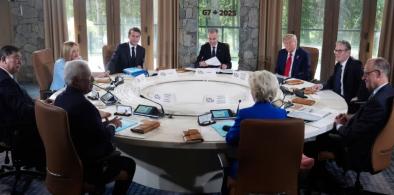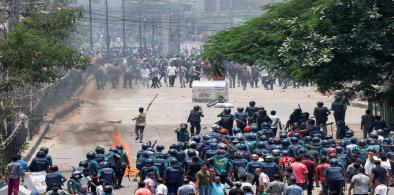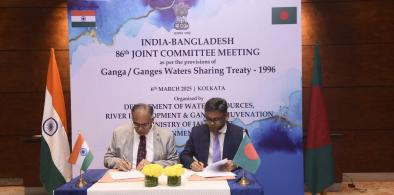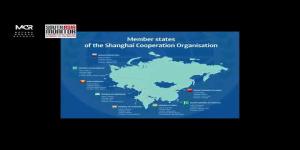But this declaration will never be signed. The actual G7 communiqué will likely promise "managed decline" disguised as "leadership"—words drafted in servitude to the oil beneath Alberta’s soil, not in the spirit of its majestic mountains.
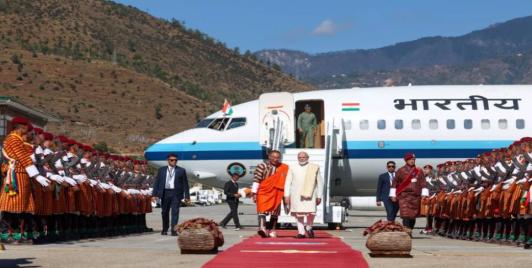
India-Bhutan Relationship Offers A Constructive Model For South Asia And A Peaceful Himalayan Region
Beyond India–Bhutan relations, the visit conveys a wider message to South Asia: cooperation grounded in respect, development, and stability remains essential in an uncertain global environment. As the region evolves, India appears to recognize the importance of maintaining strong partnerships without pressuring smaller neighbors or escalating strategic competition.
Red Fort Blast: India Facing A New Form Of Jihad?
The involvement of four doctors, one of whom allegedly executed the Red Fort blast, indicates a model that blends 'inspired' radicalisation with limited external facilitation. Interactions with certain outfits, Kashmiri terror commanders, and external handlers—if confirmed—point to an infrastructure that encourages attacks while maintaining plausible deniability.
The Nuclear Reckoning: Moment Of Awakening For India
It is time for India, along with like-minded nations across Asia, Africa, and Latin America, to articulate a shared agenda of non-alignment 2.0, not as a posture of neutrality but as a strategy of autonomy. The original Non-Aligned Movement (NAM) emerged from the Cold War’s bipolar tension; its modern counterpart must respond to multipolar volatility.
Endangered Indigenous Languages of South Asia: With Dominant Languages Replacing Mother Tongue, Are They Doomed To Die?
The world over, as is evident from the Atlas of endangered languages, there is a thrust of the dominant languages taking a precedence and most of the endangered languages are likely to disappear by 2100. Soon, possibly in the near future, the grand and great grand-children of the present generation may not be able to tell the story of their own mother tongue. Some of these languages will be lost forever and will only be limited to the pages of gazetteers and history books.
Middle East On The Brink: What India Must Do to Shield Its Economy
The Middle East’s volatility is not an outlier—it’s a feature of the emerging global order. India’s challenge is to anticipate these tectonic shifts and act with strategic foresight, not just tactical response. Energy security, export competitiveness, and supply chain resilience must now be treated as interlinked pillars of national power. Failing to adapt could make India a casualty of distant wars.
Op Sindoor: Were India's Strategic Objectives Fulfilled?
The absence of any form of engagement with Pakistan other than military has narrowed India’s options substantially. As a sovereign state, Pakistan cannot be seen to nor will it bow to coercive tactics. The current Indian establishment’s perennially punitive approach to Pakistan and efforts to humiliate it as an object of domestic ridicule has not yielded any dividends.
50 years of G7: Multilateralism in need of renewal
For India, this summit offers a dual opportunity. First, to shape a more inclusive multilateralism; one that amplifies the Global South’s priorities on energy, security, and digital equity. Second, to rebuild strained ties with Canada, a relationship marred by recent tensions but too strategically important to neglect.
A Month After Op Sindoor: More Questions Than Answers
So if another terror attack happens, will India launch another deep-strike operation with all the attendant risks of escalation? And how long can the tit-for-tat actions continue with the loss of soldiers and civilian lives and homes and attendant costs of military armoury and infrastructure destruction at a time when economic growth and dwindling jobs need all the attention?
Drones Over the Subcontinent: India’s New Strategic Edge
The broader picture is clear: drones have dramatically shifted the cost calculus of modern warfare. As analysts have noted, $10,000 drones are now routinely met with $2 million missiles. Only a country capable of producing its own unmanned systems, and adjusting its tactics in real time, can maintain strategic credibility under such conditions.
Is Bangladesh slipping toward a praetorian state?
Bangladesh’s 2024 crisis has significantly strained civil-military relations. The military’s instrumental role in ousting Hasina and installing the interim government has amplified concerns of a deepening praetorian drift. As Yunus’s control weakens amid economic turmoil, law-and-order issues, and geopolitical friction, the military appears increasingly assertive—opposing civilian initiatives and resisting reforms.
Pakistan’s Dwindling Foothold In Afghanistan Market: Need To Restore Trust Between Islamabad And Kabul
The recent clash between Pakistan and India after the Pahalgam attack on April 22 has created concerns in Kabul over Afghanistan’s trade flow. Abdul Latif Nazari, a Taliban deputy minister of economy, emphasized, “Tensions in India-Pakistan relations negatively impact Afghanistan’s economic situation".
Eco-Theater in South Asia: The Real Cost of Greenwashing
The climate crisis isn’t waiting. In South Asia, it’s already arrived — in the form of droughts, deadly heat waves, and flash floods. These are not future risks. They’re happening now. And for communities facing those impacts, a corporation’s sustainability page doesn’t count for much. This region deserves better than slogans. It deserves action that doesn’t just sound good but does good — for the air, for the water, and for the people whose lives are tied to both.
Cyber Violence Is Silencing Women in Bangladesh
One high-profile case involving a Bangladeshi actress made this painfully clear. When private videos of her were leaked by a former fiance, the fallout was swift—but not for the man who betrayed her. The scrutiny, the mockery, the moral judgment—it all landed squarely on her shoulders. The technology was modern; the public reaction was anything but.
Bangladesh Not Sliding Into Radicalism: Indian Media Peddling False Narratives, Will Harm Ties
Indian media’s portrayal of Bangladesh as sliding into extremism also threatens to derail valuable regional cooperation initiatives. South Asia is one of the least integrated regions in the world, despite shared histories and cultural ties. Any attempt to isolate Bangladesh or provoke fear-mongering narratives does not serve the interests of the region’s people. India and Bangladesh have enjoyed largely cordial relations in recent years; however such baseless media narratives risk fraying this relationship
A Looming Water Crisis for Bangladesh: Will Dhaka-Delhi Renegotiate Ganga Water Treaty?
Amid reported Indian reluctance, Dhaka has turned to Beijing for a 50-year master plan on river management. This has raised alarms in Delhi, especially as the proposed infrastructure is near the strategically sensitive Siliguri Corridor, a 22-kilometer-wide stretch connecting India to its northeastern states. Dhaka's pivot towards Beijing may ultimately disrupt the regional balance of power.
Unlimited lessons from a limited war: Questions that need to be asked
Trump equated India and Pakistan when he spoke on the ceasefire, erasing the genuinely-earned and the increasingly well-accepted de-hyphenation of two neighbours that were born at the same time but have walked very different paths – India as a secular nation that is an economic powerhouse while Pakistan as a failing democracy that faces economic uncertainty. This re-hyphenation is a sorry picture because it dwarfs India and keeps the nation confined and limited
War is not a solution: India and Pakistan's priorities lie in dealing with human suffering, building on core strengths
So, instead of becoming two adversaries and wasting money and men on terrorism and war, both nations should focus on education, health, employment and on building nation specific infrastructure projects. Today, the breed of strong global leaders with ethics and morality is fast disappearing. War between nations is exploited to boost weapon trade.
How Modi’s India is Rewriting the Rules of Warfare and Reshaping Regional Dynamics
The consequences are dangerous. Both sides now feel compelled to respond forcefully, fearing that restraint might be perceived as weakness. Pakistan, already grappling with economic and political instability, faces increased pressure to retaliate. For India, any future terror attack is likely to provoke immediate military response. The threshold for conflict has lowered significantly—creating a volatile environment where a single militant operation could ignite full-scale war.






